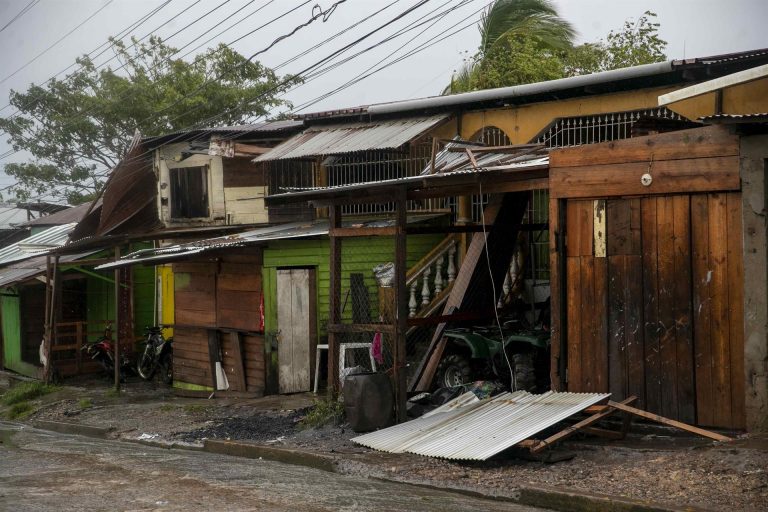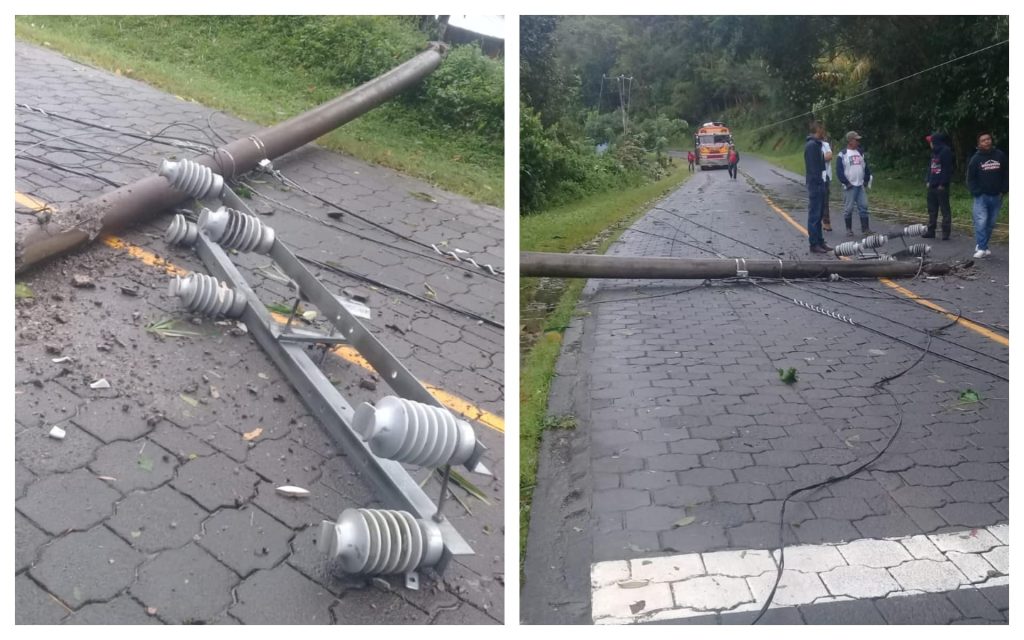13 de octubre 2022

Children of Exile: The Births “Sowing Hope” in the Camp of Nicaraguan Farmers

PUBLICIDAD 1M
PUBLICIDAD 4D
PUBLICIDAD 5D
The category 1 hurricane left thousands of homes destroyed or flooded, hundreds of fallen trees and dozens of overflowing rivers in 15 departments

View of a house with the roof torn off by the winds of Julia, in Bluefields, South Caribbean. Photo: EFE
Hurricane Julia left more than 8,000 homes damaged or destroyed and had 200,000 families temporarily without power or drinking water throughout the country, according to the latest reports from the Executive. The cyclone also felled many countless trees and the overflow of more than 70 rivers in the different departments of Nicaragua.
Julio entered Nicaragua in the early hours of Sunday, October 9, in an area between Orinoco and Laguna de Perlas, in the South Caribbean. In its wake, it also left at least two people dead, who were dragged by the currents of overflowing rivers and streams, and another two disappeared.
The most serious damage, according to citizen reports and figures revealed by the Government, were recorded in the South Caribbean of Nicaragua, especially in El Rama, Bluefields, and Corn Island, although other places such as Laguna de Perlas and Orinoco, until Monday afternoon continued without even being able to communicate with the State authorities, who said they were still gathering information for a complete damage report they are preparing.
The number of people left without basic services because of Julia could be higher, but there are several municipalities, both in the South Caribbean and in the central zone of Nicaragua, where communications have not been restored, according to VP Rosario Murillo.

View of a house flooded by Hurricane Julia in the area of Salto Grande, New Guinea. Photo: EFE/Jorge Torres

El Rama, in the South Caribbean of Nicaragua, was almost completely flooded after the three rivers that meet in that area overflowed. Photo: Courtesy

View of the damage caused by Hurricane Julia in the Tasbapauni community, near Laguna de Perlas in the South Caribbean. Photo: Taken from social networks.

Some areas of Bilwi, in the North Caribbean, also reported to CONFIDENCIAL flooded areas due to rising rivers. Photo: Courtesy.

Citizen reports indicated that families in the 5 de Julio neighborhood of Matagalpa were seriously affected by flooding caused by the flooding of the river. Photo: Courtesy.

On the road to the municipality of Waslala, in the department of Matagalpa, citizen networks reported the power line down. Photo: Courtesy.

In San Francisco de Cuapa, Chontales, flooding of houses was also reported caused by the rivers and streams that pass through the area. Photos: Taken from social networks.

The strong currents passed over the Panmuca bridge at the exit of La Libertad, Chontales. Photo: Courtesy/United Voices

In Juigalpa, Chontales, families reported serious damage caused by rising rivers and streams in the area. Photo: Courtesy/United Voices.

A citizen, identified as Gustavo Talavera, is dragged by the currents of the El Zapote ravine, in Estelí. The man is reported missing. Photo: Capture a video

In Nandaime, Granada, several families had to be evacuated from their homes due to rising rivers. Photo: Courtesy/United Voices.

In Diriomo, Granada, citizens reported flooding after the currents caused by the rains exceeded the gutters and entered properties. Photo: Courtesy/United Voices.

In the different municipalities of the department of Carazo, houses were also reported flooded, in addition to falling trees and power lines. Photo: United Voices.

In the department of Chinandega, there were homes flooded and the destruction of businesses from the winds and falling trees, especially in the coastal area of Corinto, where Tropical Storm Julia left the country. Photo: Courtesy/United Voices.

In Managua, houses were also destroyed and others with minor damage from roof detachments, in addition to flooding due to the overflow of rivers and in the areas surrounding Lake Xolotlán. Photo: Taken from the social networks of the Managua Mayor’s Office.
This article was originally published in Spanish in Confidencial and translated by Havana Times
Archivado como:
PUBLICIDAD 3M
Confidencial es un diario digital nicaragüense, de formato multimedia, fundado por Carlos F. Chamorro en junio de 1996. Inició como un semanario impreso y hoy es un medio de referencia regional con información, análisis, entrevistas, perfiles, reportajes e investigaciones sobre Nicaragua, informando desde el exilio por la persecución política de la dictadura de Daniel Ortega y Rosario Murillo.
PUBLICIDAD 3D